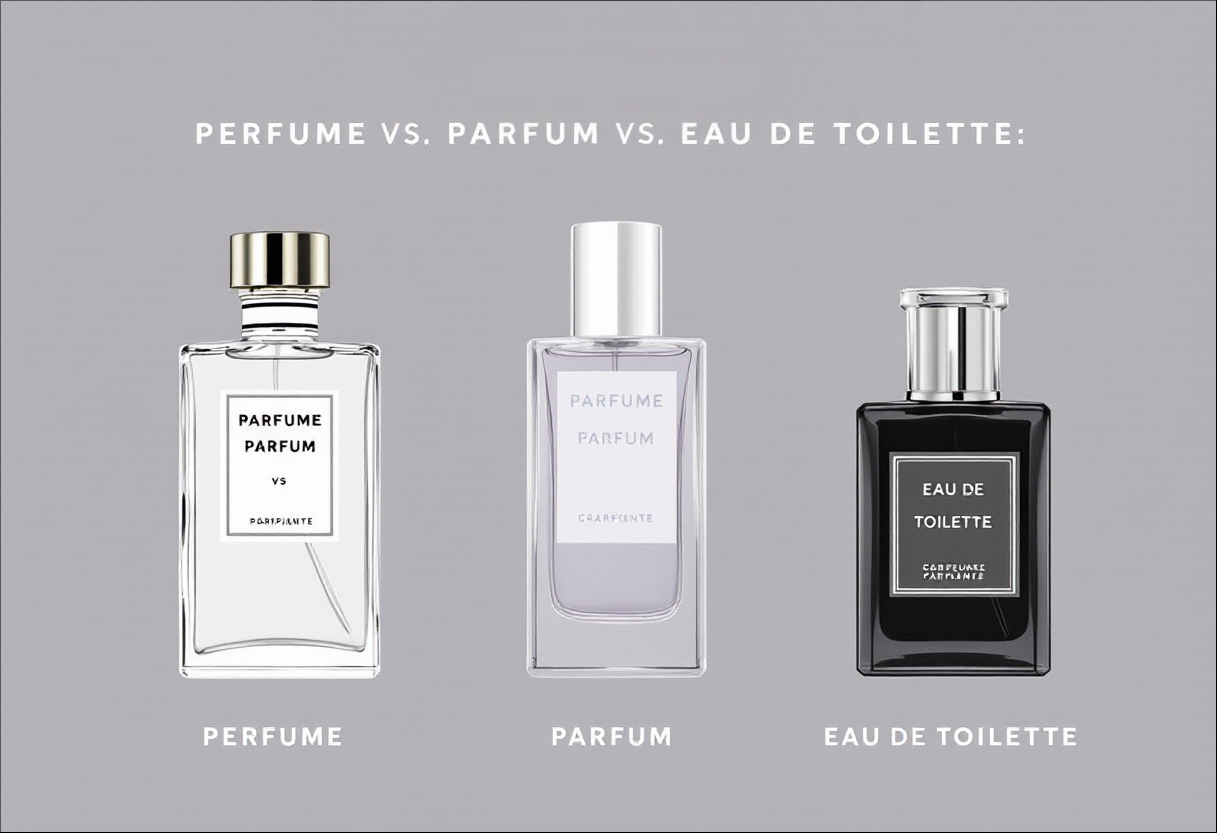Your cart is currently empty!
Perfume vs. Parfum vs. Eau de Toilette: What’s the Real Difference?

Walk into any fragrance store and you’ll see labels like “Eau de Parfum,” “Eau de Toilette,” or simply “Perfume.” But what do these terms actually mean? Are they just fancy branding, or do they affect how long a scent lasts and how strong it smells?
This guide breaks down the real differences between perfume types so you can make smarter, more informed choices when buying your next fragrance.
The Key Difference: Concentration of Fragrance Oils
Perfume labels refer to the percentage of aromatic compounds (oils) in a formula. The higher the concentration, the more intense and long-lasting the scent.
1. Parfum (Extrait de Parfum or Pure Perfume)
Oil concentration: 20%–30%
Longevity: 8–12 hours or more
Parfum is the most concentrated form of fragrance — rich, long-lasting, and luxurious. Just a small dab can last all day, making it ideal for special occasions or colder weather.
Pros: Requires less product, softer projection, more complex dry-down.
Cons: Usually the most expensive; not ideal for hot climates.
2. Eau de Parfum (EDP)
Oil concentration: 15%–20%
Longevity: 6–8 hours
EDP is one of the most popular concentrations due to its balance of strength, longevity, and price. It offers great projection without being overpowering, suitable for everyday or evening wear.
Ideal for: Those who want a lasting scent without the intensity of pure parfum.
3. Eau de Toilette (EDT)
Oil concentration: 5%–15%
Longevity: 3–5 hours
EDT is lighter and fresher, often used in daywear or summer fragrances. It’s more affordable and typically comes in larger bottles due to more frequent application needs.
Pro tip: Spray on clothing for added longevity — just avoid delicate fabrics.
4. Eau de Cologne (EDC)
Oil concentration: 2%–5%
Longevity: 1–3 hours
Traditionally associated with men’s fragrances, EDCs are extremely light and refreshing. Ideal for post-shower or gym use, they are meant to be reapplied frequently.
Note: The term “cologne” is often used generically in the U.S., but true EDC has specific concentration characteristics.
5. Eau Fraîche
Oil concentration: 1%–3%
Longevity: Up to 2 hours
This is the lightest form of fragrance, often water-based rather than alcohol-based. Think body sprays or mists — very subtle and ideal for layering or freshening up.
Which Type Should You Choose?
- For all-day wear: Go for Parfum or Eau de Parfum.
- For hot weather or daily use: Eau de Toilette is versatile and less overpowering.
- For gym bags or quick refresh: Eau de Cologne or Eau Fraîche works best.
How to Read the Label
Most bottles indicate the concentration type on the front or bottom. If it’s not listed, check the brand’s website or ask a sales associate. Some niche or luxury houses only sell in EDP or Parfum form.
Final Thoughts
Understanding the difference between perfume concentrations helps you match your fragrance to your lifestyle, budget, and desired performance. Whether you’re building a signature scent wardrobe or buying your first designer bottle, this knowledge ensures you get exactly what you expect.
Next in our Plenty Scents series:
How Perfume Is Made: From Raw Ingredients to the Final Bottle →
Leave a Reply
You must be logged in to post a comment.